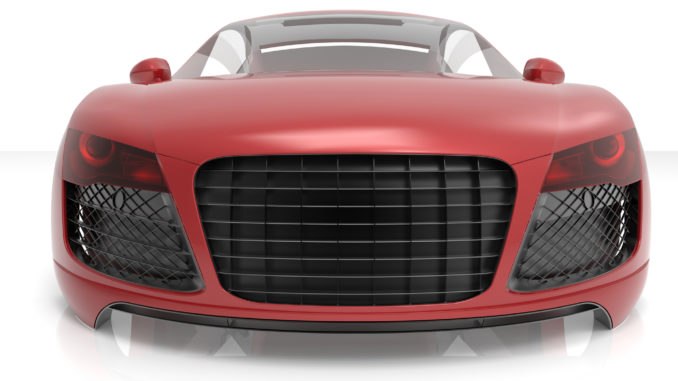
The remarkable Herbert Simon won the Nobel Prize in Economics in 1978 and the Turing Medal in 1975. Reading about his life gives me a panic attack when I consider how little I have achieved in comparison. He published ‘Administrative Behaviour’ in 1947, and I started reading it in 2021. I started by treating it as a relic of World War II era business, a history book. I was quickly filled with horror as Simon explained business, thinking and decision making in ways which seemed obvious after reading them, but I had never even thought of. I immediately felt weak. I felt like a total imposter. How had I never read Herbert Simon before? Why had nobody told me? It panicked me for days. I managed to drop a reference to the book into every meeting for weeks. That practice soon calmed me down, it turns out almost no-one I know had read it either.
Early in the book, Simon talks about how each department in an organization has one job. They take in information and turn it into decisions which are executed (either by them or another department). He introduces the concept of Bounded Rationality – how it is impossible to evaluate an almost infinite set of possibilities when deciding. Instead, we must choose a smaller ‘bounded’ set of assumptions to work within.
Back in the actual world of architecture, I have always boiled the job down to either a) making decisions or b) provide information to help others make decisions. I’ve only ever had a vague sense of how architects make decisions, even though it’s been my job for the majority of my career.
In a fantastic paper published in 2014, “EA Anamnesis: An Approach for Decision Making Analysis in Enterprise Architecture”, Georgios Plataniotis, Sybren de Kinderen and Henderik Proper explain the importance of capturing decisions made about architecture. They go further, arguing that capturing the reasons for a decision and alternatives considered is just as important. Documenting the rationale when a decision is made gives it context, explains the environment at the time, and helps inform future decisions.
The paper describes four strategies used to make Enterprise Architecture decisions. Each decision is an attempt to decide on the best alternative among competing choices. They split decision types into the following buckets:
- Compensatory. This type of decision considers every alternative, analyzing all criteria in low-level detail. Criteria with different scores can compensate for each other, hence the name. There are two types here:
-
- Compensatory Equal Weight – criteria are scored and totaled for each potential option, the option with the highest total signifies the best decision.
-
- Compensatory Weighted Additive (WADD) – here a weighting is given for a criterion to reflect significance (the higher the weighting, the higher the significance). The weighting is multiplied by the score for each criterion, then each alternative is summed, the highest total winning.
- Non-Compensatory. This method uses fewer criteria. The two types are:
-
- Non-Compensatory Conjunctive – alternatives that cannot meet a criterion are immediately dismissed; the winner is chosen among the survivors.
- Non-Compensatory Disjunctive – an alternative is chosen if it complies with a criterion, irrespective of other criteria.
Say you were buying a car, and you had the following criteria: fuel efficiency, color, cost, and ease of parking (as scored below).
| Car | Fuel | Color | Cost | Parking | Total | Fuel x2 | Weighted Total |
|---|---|---|---|---|---|---|---|
| Car A | 9 | Black | 6 | 4 | 19 | 18 | 28 |
| Car B | 6 | White | 10 | 5 | 21 | 12 | 27 |
| Car C | 4 | Grey | 4 | 10 | 18 | 8 | 22 |
| Car D | 1 | Red | 1 | 8 | 10 | 2 | 11 |
The four strategies might look like this:
- Compensatory Equal Weight – in this case you pick the highest unweighted total – Car B
- Compensatory Weighted Additive – because you drive long distances, you apply a double weighting for fuel mileage and pick the highest weighted total – Car A
- Non-Compensatory Conjunctive – because you live in a city, you discard any car that isn’t easy to park (at least 7/10). This leaves a choice between C and D you chose the highest score between them – Car C
- Non-Compensatory Disjunctive – you fall in love with a red car – ignore everything else – Car D
Compensatory decisions are suitable when time and resources are available to
- gather the right set of alternatives,
- evaluate each alternative in detail
- score each with consistency and precision.
Non-Compensatory decisions are necessary when
- there is time stress
- the problem is not well structured
- the information surrounding the problem is incomplete
- criteria can’t be expressed numerically
- there are competing goals
- the stakes are high
- there are multiple parties negotiating in the decision.
A level of pragmatism is important when choosing a decision strategy. Using Simon’s concept of bounded rationality, compensatory decisions can never be fully worked out. Some level of assumptions are necessary, otherwise the work needed to make every business decision is almost infinite. However, within a set of ‘givens’ (given we need to decide by Friday, and given budget is x, and given resources available are y, and given etc) the weighted additive method (WADD above) has proven effective in my experience. The framework forces decision makers to consider each alternative clearly, as opposed to a clump of criteria mashed together. It also forces all parties to agree a set of weights, helping the group agree on the hierarchy of importance. These processes improve communication between parties, even when they disagree on the choices of criteria and weights.
A strange magic happens during negotiation of the scoring, as parties try to force their choice. The mental mathematics going on inside heads is a dizzying. I have witnessed all types of behavior, from people determined there be no change, to an exec wanting an inflight magazine article to form the basis for all future strategy, to a head of a business unit wanting us to use his nephews school project as part of the solution, all the way to one mid 40s executive, who got so annoyed with the debate, that he started jumping up and down and stamping his feet because he wanted his decision, and “that’s what I’ll get”.
So where does that leave a working architect? First, we must know how we make decisions. This requires us to reflect on the process that we use to come up with a decision. This reflection should come both during the decision process and sometime after. This gives us two different perspectives, one with the heat of the decision still smoldering in our chests, one with a cooler detached air. Secondly, documenting both the environment during decision time and all alternatives considered gives everyone a richer understanding of how an organization came to be the way it is. Finally, please read Administrative Behavior by Herbert Simon.
Start now.
Mark Greville is VP of Architecture at Workhuman (www.workhuman.com) and can be contacted directly at www.markgreville.ie”



